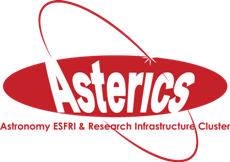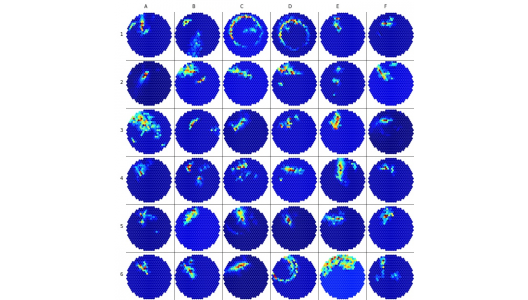Muon Hunters 2.0 - Return of the rings
As the ASTERICS project drew to a close, we launched our final citizen science experiment, Muon Hunters 2.0 - Return of the Ring, a follow up to our immensely successful original (ASTERICS-supported) Muon Hunter project.
The original Muon Hunter experiment was based on data from the VERITAS telescopes, used to detect some of the highest-energy photons in the Universe. These photons are gamma-rays that originate in astrophysical environments such as the expanding blast waves thrown out by supernova explosions, or from powerful streams of material that flow from the cores of active galaxies at speeds close to that of light. Muons (a particle like an electron, only heavier) are a prominent background contaminant when observing very-high-energy gamma rays on earth. They leave a distinctive ring-like shape making them obvious to the human eye, but incomplete or truncated rings can appear very gamma-ray-like to automatic analysis algorithms. We sought the help of the public to identify camera images that contain muon rings so we can teach computers to better identify such images and efficiently filter out those pesky muons that are masquerading as gamma rays. This project was a runaway success. This original Muon Hunters project welcomed 6,107 citizen scientists who made 2,161,338 classifications of 135,000 objects.
The Muon Hunters 2.0 experiment engages citizen scientists in identifying patterns from muons-elementary particles like electrons, but heavier-and distinguish them from those produced by gamma rays, which the telescopes are designed to detect. "At VERITAS, we're searching for gamma rays, which have the shortest wavelengths and the highest energy of any portion of the electromagnetic spectrum," said Dr. Michael Daniel, Operations Manager, VERITAS. Muons are background that we have to get rid of so that we can more easily identify gamma rays, but they're also useful to help us calibrate our telescopes. That's where Muon Hunters, and the citizen scientists behind it, come in."
New to Muon Hunters 2 is the manner in which data will be presented to citizen scientists. Muon Hunters 2 will present images in a grid pattern, rather than individually, to bring additional efficiency to the project.
"This time around, we're trying to make both the project and the telescopes more efficient," said Dr. Lucy Fortson, University of Minnesota Physics and Astronomy Professor and VERITAS researcher. "We use a machine to help the people work more efficiently and the classifications we get from citizen scientists help the machine to work more efficiently, so it's a virtuous loop. Scientists will use the images that citizen scientists have identified to better train their computer programs to automatically tell the difference between muons and gamma rays."
- Classifying Variable Stars using SuperWASP data
- [Topic: Citizen Science]
- [node:title]
- 6 of 6


 ASTERICS is a project supported by the European Commission Framework Programme Horizon 2020 Research and Innovation action under grant agreement n. 653477
ASTERICS is a project supported by the European Commission Framework Programme Horizon 2020 Research and Innovation action under grant agreement n. 653477